CONTACTAbout UsCAREER OPPORTUNITIESADVERTISE WITH USPRIVACY POLICYPRIVACY PREFERENCESTERMS OF USELEGAL NOTICE
© 2025 Equal Entertainment LLC.
All Rights reserved
All Rights reserved
By continuing to use our site, you agree to our Privacy Policy and Terms of Use.
We need your help
Your support makes The Advocate's original LGBTQ+ reporting possible. Become a member today to help us continue this work.
Your support makes The Advocate's original LGBTQ+ reporting possible. Become a member today to help us continue this work.
Spawned by a design student's self-published comic series, My Brain Hurts has garnered a following of devoted fans across the country. The second volume of Liz Baillie's collection, which was released earlier this month, picks up with its page-turning mix of teen angst, tricky relationships, tested friendships, underground punk shows, and a few harsh realities, all set in New York City's punk underground.
Advocate.com: How did the anthology to your series come about?
Liz Baillie: It started out that I was printing it myself as a mini-comic -- it's like a Xeroxed, stapled thing that you do yourself. Then I contacted Microcosm Publishing because they already do distribution for mini-comics and zines, so I wanted them to distribute my comic version. They liked it, and after I had been putting out several issues, the earlier issues started to go out of print. Since it's an ongoing story, it's kind of hard to follow along, so they approached me about doing a book collection of the first five, at least, just to put something in print so people can read it.
Why did you choose New York for this story?
I grew up in New York, so when I started doing My Brain Hurts, it was the first long comic I had done. I was still in school -- I went to the School of Visual Arts for cartooning -- so I had been making comics at school. You know, a couple of pages here and there, but I wanted to do a long story, like a book, and serialize it. So the first thing that came to mind was a slice of life with stuff that I'm familiar with. I created characters that were composites of people I've known, or experiences that I've seen or that have happened to me. I basically created a list of all the different kinds of topics I wanted to cover, and I just kind of broke it into an outline. I really just wanted to make a long story that I hadn't seen already. I never really read a book that had characters like that. It was all about creating a book that I would want to read.
Yeah, the characters felt authentic. I take it you came up from the punk scene growing up in New York?
Absolutely. I got into punk rock because I have an older brother -- he's five years older than me -- and he's been in a number of really popular bands in New York. He started taking me to shows, and he bought me my first tapes. The coolest thing he would do is get me into shows that were like, 16 and over, or 21 and over, when I was just 14, because he was in all these bands that were popular in New York. I definitely came up in high school and college, and even now, submerged in the punk rock stuff.
Of course. A short time ago, I was volunteering at the Hetrick-Martin Institute. It's an after-school program for LGBT youths. I actually ran a little comics group there, for about a year, and I showed them my comics, and my friends' comics, and they seemed really into it. I've also been approached by kids at conventions; I always get these really adorable awkward moments where these teenagers will be like, "Hi...I really...you're really good, you know, they really like it and they're really cute about it. I like, I like to hear that, you know, I'm not some old person writing about teenagers from a completely different, out of touch sort of perspective. I like to know that it's really realistic from the source.
So I see that you will be going on a tour later this month, going into October. What is a comic tour like for you?
Well, it's been a while. I know some friends and other people in comics who went on tour to promote their new books; whenever they have a new book they'll travel around to different cities and do readings and sell books and sign books at the store, and that's what we're doing. I have no experience with it; I'm flying by the seat of my pants pretty much, so basically I was like, "I want to go to these cities...sounds good. I want to go to these stores. I have a friend there, we'll stay there." So it's going to be me and my friends and Gabby, but Gabby's pen name is "Ken Doll," which is what people know him by. We all have new books coming out and so we're all going to do readings, you know, slideshow type things -- read from the comics while they're projected on-screen. It should be pretty fun. We're going to be on tour for two weeks covering some of the East Coast, the northern part of the South, the Midwest, you know, that kind of thing.
So do you have any influences or artists you look up to as far as your style or your form of storytelling?
I've always read comics when I was a kid, but when I first started getting into indie comics -- I was basically into photography at the time and I didn't really draw comics that much, but I was going out with this guy who had a huge indie comic collection, he was really into indie comics. And he'd be like, "Let's go to the comic book store!" And I'd be like, "OK, that sounds cool."
So I would go in and I would read some of the stuff in the indie section and he really got me into -- the first thing I really got into was Eightball by Dan Clowes, and since then, since I started reading it, he has gotten huge. He writes movies and stuff now. And then he also had a lot of copies of an old magazine called Weirdo, which I think was edited by R. Crumb in the '80s. It was awesome; it was like an anthology periodical, I guess. It had Peter Bagge in it, Gloeckner, a number of indie artists from that period, the '80s, and from there I learned about Phoebe Gloeckner and Dori Seda, [who] were two really big influences, artistically and content wise. They both tend to use little lines. I like that-- cute little lines. They both talk about real-life things. Phoebe Gloeckner did a lot of work about her adolescence, that kind of thing. So that particularly spoke to me I guess.
With Kate, the main character of My Brain Hurts, was there anyone in particular you were drawing on, as far as inspiration for her story, coming out, dealing with the high school drama?
Well, the character of Kate is mostly based on me at that age. Specifically because when I started doing it I consciously made her look like me when I was 16, so that's pretty much exactly what I looked like when I was that age. And I had a lot of experiences where I had these friends and they were doing really dumb stuff, and I had a lot of moments where I had to make decisions, like, "Do I really want to do this, or do I want to be more intelligent?"
So for someone who hasn't read any of your comics, how would you describe your work?
Well, My Brain Hurts specifically, the way I always describe it is...if the person is familiar with the Canadian series Degrassi Junior High or Degrassi High, or Degrassi: The Next Generation. Any of those. I would describe it as a gay, teen, punk Degrassi in New York. It's like a teen drama, but they're like a little bit gayer and a little bit punker, and a little bit more New York-y.
From our Sponsors
Most Popular
Bizarre Epstein files reference to Trump, Putin, and oral sex with ‘Bubba’ draws scrutiny in Congress
November 14 2025 4:08 PM
True
Jeffrey Epstein’s brother says the ‘Bubba’ mentioned in Trump oral sex email is not Bill Clinton
November 16 2025 9:15 AM
True
Watch Now: Pride Today
Latest Stories
Lillian Bonsignore will be first out gay Fire Department of New York commissioner
December 23 2025 6:21 PM
The HIV response on a cliff-edge: advocacy must drive urgent action to end the epidemic
December 23 2025 2:23 PM
CECOT story pulled by Bari Weiss gets viewed anyway thanks to Canadian streaming service
December 23 2025 2:05 PM
Burkina Faso issues first sentence for 'homosexuality and related practices'
December 23 2025 2:02 PM
Transgender NSA employee files discrimination lawsuit against Trump administration
December 23 2025 12:03 PM
Billy Porter is set to make a 'full recovery' from sepsis
December 23 2025 11:54 AM
Soccer stars Rafaelle Souza and Halie Mace are engaged & the video is so adorable
December 23 2025 10:52 AM
What is 'hopecore' and how can it make life better for LGBTQ+ people?
December 23 2025 10:00 AM
Santa Speedo Run 2025: See 51 naughty pics of the festive fundraiser
December 23 2025 6:00 AM
Instructor who gave U of Oklahoma student a zero on anti-trans paper removed from teaching
December 22 2025 9:36 PM
All about the infamous CECOT prison — on which CBS's Bari Weiss pulled a story
December 22 2025 7:27 PM
Chest binder vendors respond to 'absurd' FDA warning letter: 'Clearly discrimination'
December 22 2025 3:16 PM
Gay NYC Council member Erik Bottcher drops U.S. House bid, will run for state Senate instead
December 22 2025 2:03 PM
Massachusetts removes rule requiring foster parents to support LGBTQ+ youth
December 22 2025 12:55 PM
Dave Chappelle defends Saudia Arabia set: Trans jokes 'went over very well'
December 22 2025 12:33 PM
Texas judge who refused to officiate same-sex weddings sues to overturn marriage equality
December 22 2025 11:41 AM
At 50, passing isn’t the goal. Living is
December 22 2025 6:00 AM
































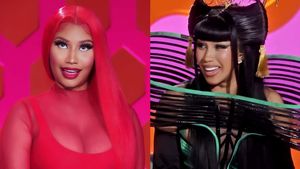


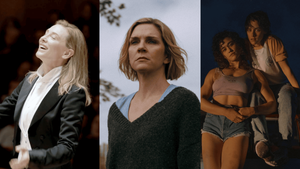
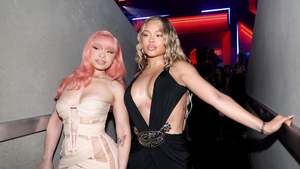






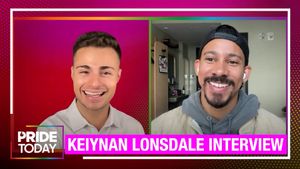


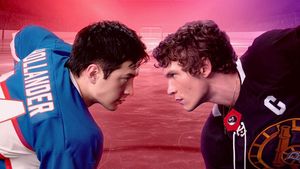



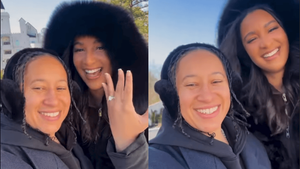


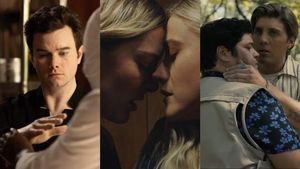
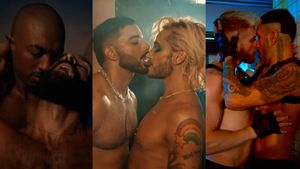








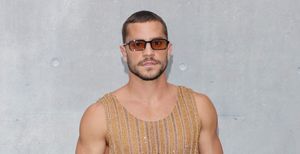
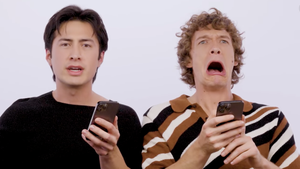

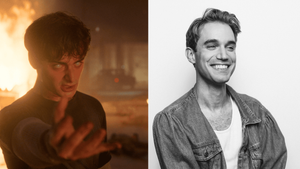

Charlie Kirk DID say stoning gay people was the 'perfect law' — and these other heinous quotes